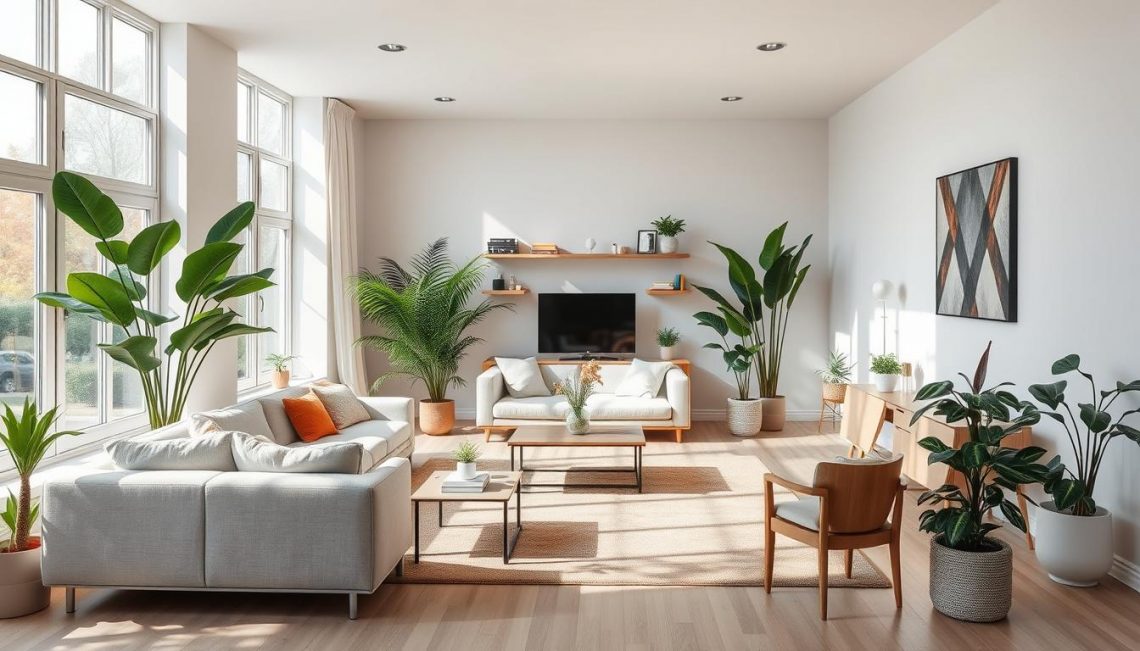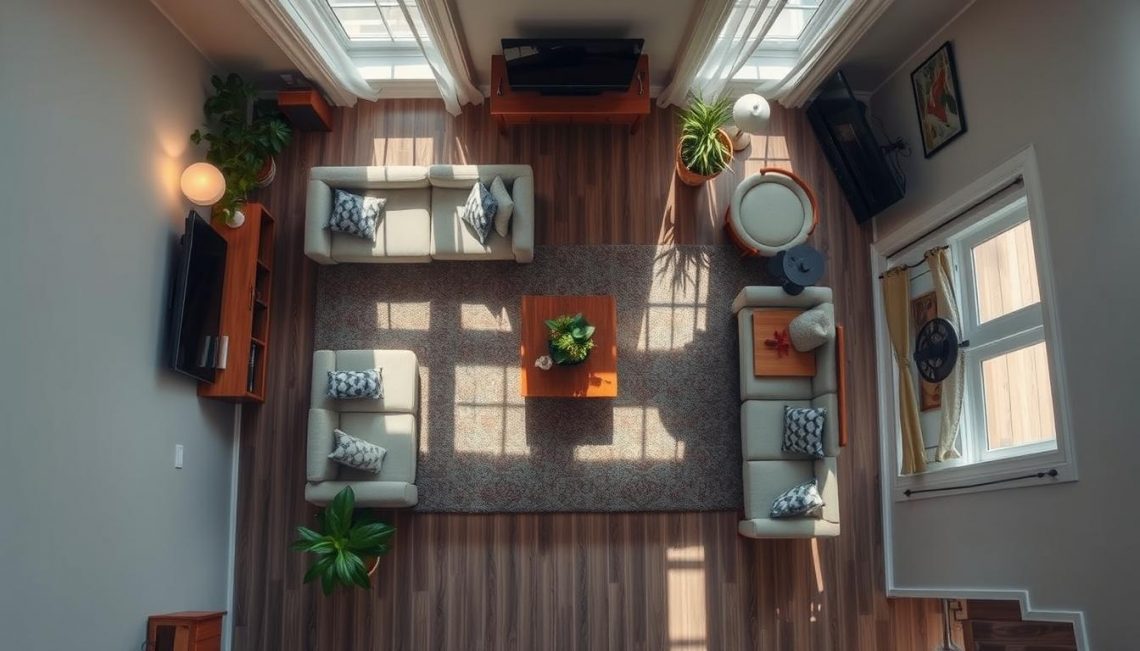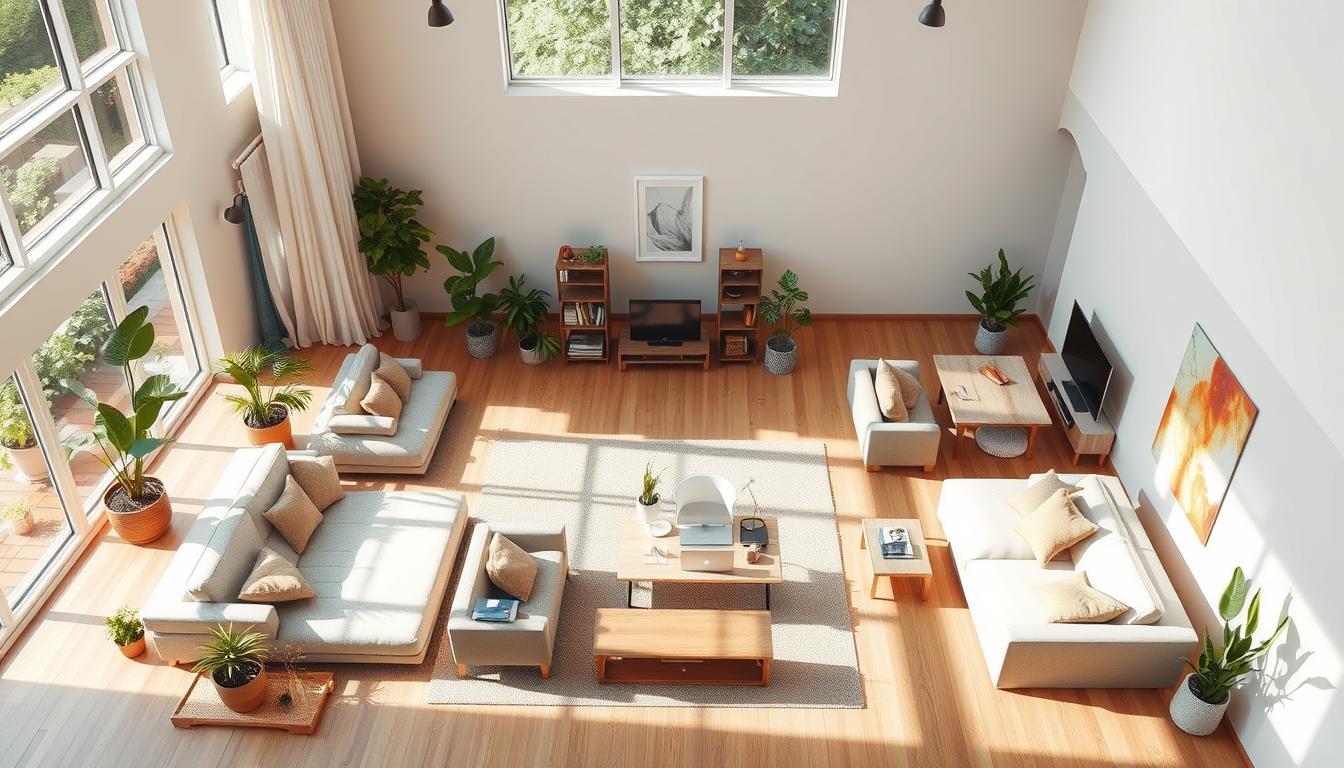Welcome to the world of spatial planning. Here, we blend effective space use with creative design. Whether you want to improve your living room, make your office more efficient, or organize public areas, knowing spatial planning is key. This guide will cover important concepts and design tips to help you make any space better.
Learning to plan your space well can change how you feel about your surroundings. We’ll show you how to assess your current layout and use room organization strategies. By mastering spatial planning, you can create a space that’s both functional and beautiful.
Understanding the Basics of Spatial Planning
Learning about spatial planning is key to making spaces work well. It’s about arranging spaces and objects in a way that makes sense. Good spatial design uses certain principles to make spaces more useful and enjoyable.
What is Spatial Planning?
Spatial planning is about organizing physical space to make it better and easier to use. It’s important in fields like architecture and urban planning. Using the right principles can make spaces more efficient and welcoming.
Knowing how to design spaces helps people make the most of their space. It lets them create areas that meet their needs.
The Importance of Effective Space Utilization
Using space well is crucial for creating functional areas. Making the most of every inch can boost productivity and comfort. A well-thought-out layout helps with activities, cuts down on clutter, and encourages people to interact.
By optimizing space, people can create a more organized and pleasant environment. This makes everyday life better.
Common Challenges in Spatial Planning
There are many challenges in spatial planning, like design problems. These can include mistakes in measurements, wrong guesses about furniture sizes, and missing important details like outlets. Personal preferences can also get in the way of practical needs.
Knowing these challenges helps in finding solutions. This way, people can plan spaces more effectively in the future.

A Beginner’s Guide to Effective Spatial Planning for Any Space
Optimizing any space starts with understanding how to assess and organize it. You need tools and techniques for a functional layout that also reflects your personal style. This way, you create spaces that are both comfortable and visually appealing.
Assessing Your Space: Tools and Techniques
Begin with a detailed space assessment using measuring tools like tape measures and digital floor planners. These tools are key for accurate dimensions, essential for organizing your space well. Techniques like shadow mapping show how natural light affects the room. Flow analysis helps understand how people move in the space.
Creating a Functional Layout
Designing a functional layout is more than just placing furniture. Think about traffic flow and focal points to improve movement and interaction. Use layout tips like creating zones for different activities to make the space more usable. Balance and harmony are key to a space that is both practical and welcoming.
Incorporating Personal Style and Comfort
Adding your personal style to design makes a space truly yours. Choose colors, decor, and furniture that reflect your taste. This adds comfort and beauty to your space. Exploring trends like minimalism or bohemian design can add character. These elements make your living environment more enjoyable and personal.

Tips and Tricks for Successful Spatial Planning
Improving your living spaces can be easy. Start by using technology, like virtual staging apps. These tools let you see your space with different layouts and colors before you make any changes. This way, you can make better choices and set a solid foundation.
Another key is to use smart storage solutions. Choose furniture that does more than one thing, like ottomans that hold things or bookshelves that also divide rooms. These items help keep your space tidy and make the most of your area without losing style. Following this advice can make your living area both beautiful and useful.
Remember, planning your space is a continuous task. Your needs and tastes can change, and your space should too. Check your layouts and room functions often. Even small changes can greatly improve your comfort. With these tips, you can create a space that fits your life perfectly.



No Responses